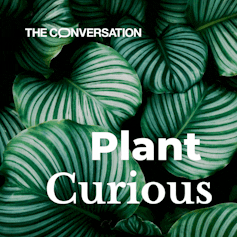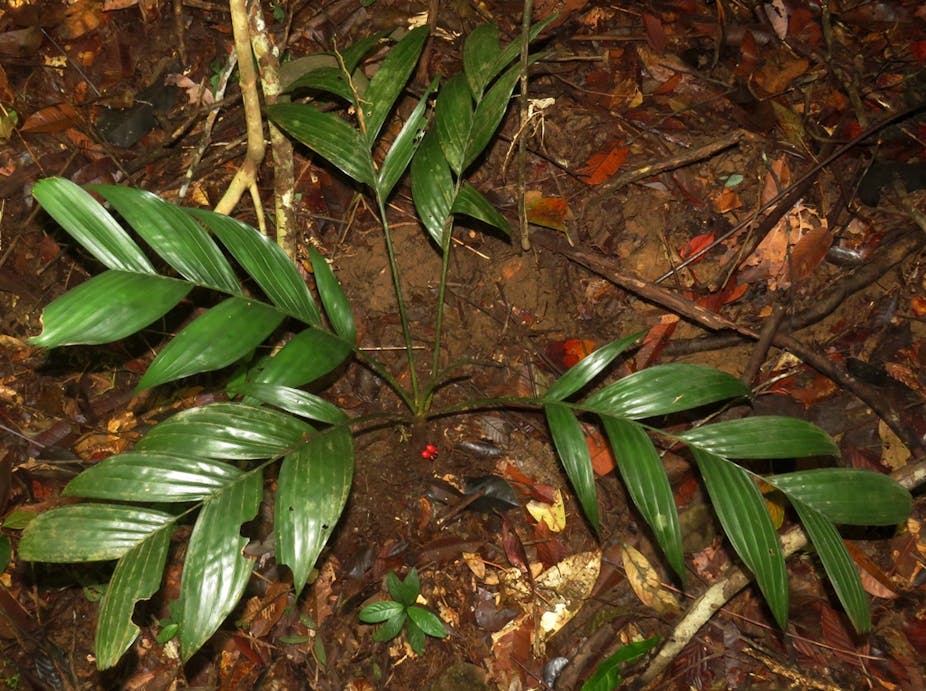In the heart of western Borneo’s vibrant jungles, the edible fruits of the underground palm are well-known to the local people who snack on them. But this botanical marvel has remained unnoticed by the scientific community for so long because it flowers and bears fruit underground.
At first glance, Pinanga subterranea, a rare palm tree, it looks like a small plant or seedling. Compared to a typical palm tree, Pinanga subterranea looks more modest and dainty, making it well-suited for smaller spaces or dense forests.
Its bright red fruits stay almost completely hidden by the soil. So how does this underground superstar survive beneath the forest floor?

Many people think of plants as nice-looking greens. Essential for clean air, yes, but simple organisms. A step change in research is shaking up the way scientists think about plants: they are far more complex and more like us than you might imagine. This blossoming field of science is too delightful to do it justice in one or two stories.
This article is part of a series, Plant Curious, exploring scientific studies that challenge the way you view plantlife.
Plants grow by using their roots to absorb water and nutrients from the soil. They also need sunlight to make their own food through a process called photosynthesis.
Typically, the stems and leaves are above ground, reaching up towards the light. Palm trees usually develop their flowers and fruits above ground for pollination and seed dispersal.
However, Pinanga subterranea challenges this norm by flowering and fruiting underground, showcasing an extraordinary survival strategy that challenges what we already know about how plants usually make and distribute their seeds.
Secrets of survival
There are three possible reasons this palm grows flowers underground, as highlighted in 2023 by the research team Royal Botanic Gardens, Kew, with partners from Indonesia and Malaysia who outlined this discovery. First, its stem demonstrates saxophone growth, bending down and then back up.
Second, the leaves form a funnel, and when organic litter piles up, roots sneak in. They suggest that the litter collects faster than the stem grows, so it stays underground.
Third, its flower clusters are short and below the leaves, usually developing completely underground.
Little is known about how exactly pollination happens in this underground palm. Pollination by flying insects such as bees is difficult, yet this palm still has a fruit and seed set that’s close to the soil surface, suggesting efficient pollination. Insects, especially beetles that move deep down through the undergrowth, might carry pollen for Pinanga subterranea.
Another potential pathway is the process of self-pollination of a flower by pollen from the same flower. Alternatively, wild boars living in the Borneo forest have been seen to unearth the red berries so they might play a crucial role too.
A master of mutation
One thing is certain though. Plants adapt by making changes in their genes, through what’s known as epigenetics. These changes help plants survive stress and adapt. While some changes are temporary, others can last longer and affect how plants grow and develop. Some might even be passed on to future plant generations, helping them to adapt and evolve.
Over time, climate change has seriously affected both the environment and the plants and crops we grow. Different environmental stresses caused by climate change, like extreme temperatures, drought and heavy rain, can make it harder for plants to grow well, affecting their quality. Pressures like these can lead to epigenetic changes.
For example, peanut flowers produce above-ground blossoms, but the fruits mature underground. This adaptation likely offers greater protection, as the underground environment provides a safer and more stable space for seed development, contributing to the plant’s overall survival and reproductive success.
A small Australian underground orchid has also adapted to develop both fruit and flowers underground. With the help of fungi, this orchid survives and reproduces in a safer and more stable underground environment.
Through epigenetic adaptations, some plants, including Pinanga subterranea, can adjust to changes without altering the core instructions or DNA. It’s like a tree’s survival manual.
Epimutations are changes that happen more often than regular changes in instructions (genetic mutations). Pinanga subterranea‘s underground flowering showcases nature’s adaptability.
By using its epigenetic toolbox to master survival in a changing climate, this palm has evolved smart ways to adapt to tough conditions in Borneo’s tropical landscape.

Don’t have time to read about climate change as much as you’d like?
Get a weekly roundup in your inbox instead. Every Wednesday, The Conversation’s environment editor writes Imagine, a short email that goes a little deeper into just one climate issue. Join the 30,000+ readers who’ve subscribed so far.

